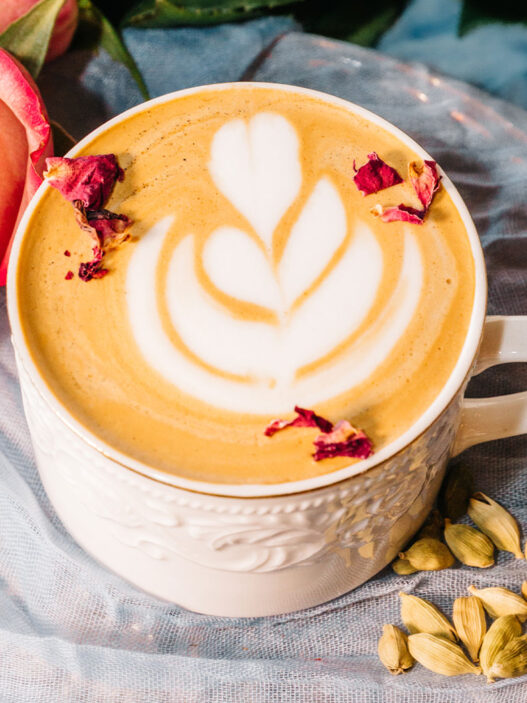We’ve all heard it countless times: fresh is better. For years, the prevailing wisdom has been that anything less than super-fresh coffee is stale coffee. We’ve been told to buy less coffee at a time, but buy it more frequently, and use it quickly, so that it doesn’t go “bad”. It sounds right, since coffee is an agricultural product. But is this always true?
Roast dates—the guideposts we go by, printed on the bags of our precious coffee—are what most people use to determine whether or not a coffee is fresh. But it turns out that what makes a coffee fresh, and what makes a coffee good (or still good) can be chalked up to a variety of factors. And the date on the bag isn’t always the most important data point. In this story we’ll dispel a few common myths and talk about the nuance of these preconceived notions—some of which have gotten a little stale.
Myth #1: Fresh Is Best, No Matter What
“Hands down, the most common misconception seems to be that fresher is better,” says Esther Shaw, roaster and co-founder of Coptic Light Coffee, currently based in Brooklyn.
“When someone is buying whole beans, I always recommend not to brew up the coffee too soon after the roast date. Let it rest minimally for a few days, ideally a week. Too soon after, the coffee hasn’t really formed its structure and lots of the nuances in the taste profile aren’t apparent yet. I often compare it to cooking a piece of meat or making a stew.”
Freshly roasted coffee beans retain CO2 and other elements from the roast process, which can negatively affect the quality of your brew. CO2 escapes the bean rapidly at first after roasting, then gradually over the course of the next many days. Coffee bags that contain one-way air valves (those little firm circles with a small opening within them) allow CO2 to easily leave the bag without the unwanted side-effect of oxygen entering the bag and accelerating the staling process. Many of us will find we enjoy our coffee better—that it will have more flavor, complexity, and dimension—if we have allowed the coffee to significantly rest and undergo the degassing process.
“Interestingly, the recommended amount of rest time has changed since I started working in coffee,” says Shaw. ” When I first started close to 10 years ago, the standard seemed to be brew within 2-4 days and pull for espresso in 5-7 days after roast for the optimal taste experience. These days it seems to be closer to 10 days for brewing and anything from 14-28 days for espresso—sometimes even longer.”
Myth #2: Coffee Expires
Not really, but it might not taste as wonderful after a long period of exposure to oxygen. Roast dates work in both directions: they can suggest both how long to wait before consuming a coffee, but they can also give you a guideline as to how long the coffee will still have good flavor and dimension. In general, roasters we consulted suggested that coffee could still taste great anywhere between a week past roast to three months past roast—but that the date on the bag isn’t the only factor.
“Roast date is one of many variables that can determine a coffee’s potential quality,” says Sam Sabori, Director of Coffee for Intelligentsia. How are off of harvest is the coffee? How was the coffee stored? How long has this coffee been on a company’s menu? These questions may be more informational than if a coffee is one versus five days off of roast. Sabori’s company, like many that sell widely across wholesale and grocery chains, puts “best by” dates on their bags.
“We developed the best by date by blindly tasting coffees over the course of several months so we are confident the coffee will perform as expected within that window,” Sabori tells Sprudge. “Outside of that window all bets are off.”
Danish roaster Coffee Collective also uses a “best by” date, after conducting a great deal of research on the science of coffee freshness, says co-owner Klaus Thomsen.
“When we started the company we did a series of experiments because we wanted to see what is freshness and how does it affect the actual quality of the cup,” says Thomsen. “We would store samples and take them out over time, and we were really interested in ‘what is the peak window of the coffee and how does it change?’ We figured out that the degassing really does happen over quite a long time. It’s very rapid in the beginning and then it slows down,” he continued. “We felt like for filter coffees it was best if we waited about a week, it would really peak, and we found that we actually had a really long window—you could wait two months and it would still taste fantastic,” says Thomsen. “After that you could still lose freshness, but if you ground fresh, we found that it’s really nice up to about three months. After three months you are starting to lose quite a lot of freshness of flavor, so we didn’t want retailers to have the bag and sell it on.”
Thomsen added that the parameters Coffee Collective arrived at for espresso were slightly different, with a recommended window of between 10 days off roast and six weeks before losing significant cup quality. (But he adds that “occasionally we’ll find a bag that’s 2.5 months old and try to pull a shot, and we’ll find that it’s still better than 90% of the coffee in Denmark, because freshness is just one of the parameters.”)
Myth #3: All Coffee Packaging Is Created Equal
Those kraft paper bags that signify a cool, independent coffee roaster may look great—but unless they prevent air from getting in, they’ll do a poor job of keeping your coffee at peak flavor. According to experts, a sealed, one-way-valve coffee bag is best for allowing the gasses you want to escape to escape without allowing the beans to oxidate too quickly. Some roasters have found that flushing the bag with nitrogen before sealing can benefit this process.
“Our experiments figured out that the best thing is to remove the oxygen, so we flushed with nitrogen, straight from the beginning, so there’s none of that oxidation happening. So that means that your degassing can sort of happen on its own,” says Coffee Collective’s Thomsen. Even if your coffee hasn’t been nitrogen-flushed, a well-sealed valve bag should go a long way towards keeping its contents intact before brewing.
That said, there are a couple more factors to consider in weighing how long your coffee may stay fresh: pre-ground coffee will go stale much more quickly than whole bean once a package is opened, which is the primary reason to grind it fresh, right before brewing. Another factor is the darkness of the roast.
Gabe Boscana of Máquina Coffee says, “When you’re roasting coffee darker, you’re breaking down the cell structure of the coffee and exposing the oils, those really dark chocolate aromatics—but it also means that you’re degrading it enough that when you open it it’s going to have a shorter shelf life.
“With a light roasted coffee, it has a longer shelf life because you haven’t degraded the cell structure. If you’re going to buy really dark roast I’d say the fresher the better. But if it’s a medium, I’d say you could probably wait two, three, or even four weeks to brew it and it would be okay. You’re better off with a lighter roasted coffee if it’s going to sit there.”
So What Do I Do With All This?
At the end of the day (or the beginning, if you drink your coffee when most of us do), keep in mind that the roast date on your coffee is a meaningful thing to pay attention to—but it’s not the only one. If you’ve selected a thoughtfully sourced, carefully roasted and packaged coffee, you can stop checking every single date on the shelf for the newest bag, and be assured that a coffee that’s had a week to rest before drinking will probably be at its peak. For most drinkers, we may not notice the difference between a few days longer than whatever you’ve been taught is optimal. In fact, all of the roasters we spoke to encouraged giving even “older” coffee a try before chucking it—a coffee that was of good quality when it was fresh will probably still be quite drinkable when it’s a bit long in the tooth.
And before anyone asks about freezing your coffee, the decision remains split on this practice. The biggest risk is introducing moisture to the beans, which can affect quality over time, but some people think it’s a surefire way to extend a coffee’s shelf life. As Esther Shaw reminds us, deciding how long to keep or how to store your coffee can be a personal decision, just as how you choose to brew.
“I try to tell people to experiment,” says Shaw. “I feel that the amount of time a coffee should rest depends on the roaster, roast profile, your brewing equipment set-up, and most importantly your own personal taste preference. Plus that’s half the fun of coffee: experimenting.”
Liz Clayton is the associate editor at Sprudge Media Network and is based in New York City. Read more Liz Clayton on Sprudge.



























